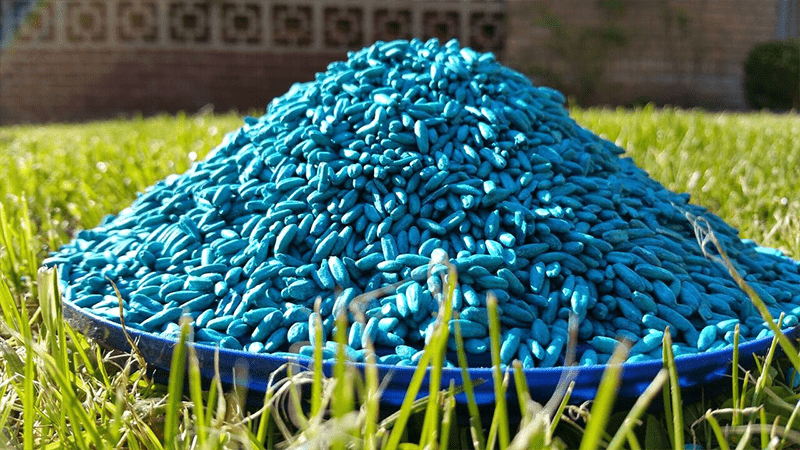Temperatures are dropping, and winter is finally upon us! With these colder temperatures, rodents like mice, squirrels and rats start to seek shelter and food in our homes. These animals can contaminate human and pet food and spread disease, so it’s important to keep them out of your home! Many people turn to mouse/rat poison (rodenticides) to keep these critters at bay.
(Please allow 5-10 minutes to read the full post.)
Before you pull out the rat poison, you may want to consider the dangers that rodenticides pose to your family and your pets. Rodenticides are obviously intended to be lethal to small animals. Pets can also be poisoned if they get into these chemicals around the home, or if they eat a dead or living animal (like a mouse or squirrel) that has consumed a rodenticide. Keep reading to learn about the signs and symptoms of rodenticide poisoning and how to protect your pets (and yourself!) when using these toxins around the home.
There are several different types of rat/mouse poisons, and each type will contain one of four main active ingredients. Each active ingredient works in different ways and will affect an animal differently, so it’s important to know which type of rodenticide you are using. If you understand the effects of the poison, you will know what symptoms your pets may display if they accidentally ingest any.
For years, the most common type of rodenticide has been anticoagulants. This form of rat poison prevents blood from clotting and causes internal bleeding. Recent Environmental Protection Agency (EPA) regulations are decreasing the availability of this type of poison, but it is still a widespread household choice. Some examples of anticoagulant rodenticides (ACRs) include bromadiolone, chlorophacinone, difethialone, diphacinone, brodifacoum, and warfarin.
Signs of Poisoning
If a dog or cat ingests an ACR, it can take up to three to five days for the toxin to show visible effects. Common signs of ACR poisoning include:
- Weakness
- Sleepiness
- Decreased Activity
- Coughing
- Difficulty Breathing
- Pale Gums
Other less common symptoms include:
- Vomiting
- Diarrhea
- Nose Bleeds
- Bruising
- Bumps on the Skin (Hematoma)
- Blood in Urine
- Reduced Appetite
- Bleeding Gums
This type of poisoning is deadly if left untreated. Treatment for ACR poisoning uses a prescription version of vitamin K. Over-the-counter versions of vitamin K are not sufficient for treating ACR toxicity.
Because of the newer EPA mandates on anticoagulants, other types of poisons are becoming more main-stream. These types include cholecalciferol (vitamin D3), bromethalin, and zinc/aluminum phosphides. Each type of poison will affect an animal differently, so it’s important to know what you have at home and how it could affect your pet if ingested. For more information on the four types of active ingredients, visit the Pet Poison Helpline’s website.
How to Keep Your Pet Safe
There are several ways that you can keep your pets safe from rodenticides. When using these chemicals, always read the label to make sure that you are using the product responsibly. Store rodenticides and other chemicals out of reach of children and animals. Keep chemical labels handy, or have a list of active ingredients in each chemical that you use. If a pet or human is poisoned, knowing the active ingredient in the chemical will increase the speed and effectiveness of treatment.
Control Rodents Without Rodenticides
Rodent populations can also be controlled without the use of any rodenticides. Here are some tips for keeping away rodents without using chemicals:
- Use live traps that don’t require chemicals. Keep in mind that these traps have to be monitored, and local regulations will define how any rodents that are caught can be disposed of or released.
- Use traps that quickly kill rodents (ie. snap traps) without the use of chemicals.
- Prevent rodents from accessing your home by filling in or blocking small access points — rodents can fit in holes smaller than a penny!
- Always keep food containers sealed so that small rodents can’t access the goodies inside.
- If possible, store pet food in plastic, glass, or other sealable containers that rodents can’t chew. If pet food is stored in bags, keep those bags on a shelf where rodents will have more trouble reaching them.
- Be diligent about cleaning! Rodents are constantly on the lookout for food and nesting materials, and keeping a clean house will prevent rodents from finding these resources. Make sure any garages and sheds are clean and free of garbage as well. Cleaning household surfaces will also reduce bacteria and other pathogens that a rodent may have brought into the house.
Every type of rodenticide can be deadly to pets, which is why it is so important to understand the dangers of these poisons and what to do in case of an emergency. The sooner that a poison is identified, the sooner a pet can be property treated, and the lower the chances are of serious side effects. Pets can be exposed to rodenticides even if you don’t use them around your own home. If you think your pet has been poisoned, call the Pet Poison Helpline at 855-764-7661. Keep their number handy at all times, just in case of an emergency. Finally, always know where your nearest animal emergency clinic is located. It’s always better to be prepared, especially when your pet’s health is at stake!






